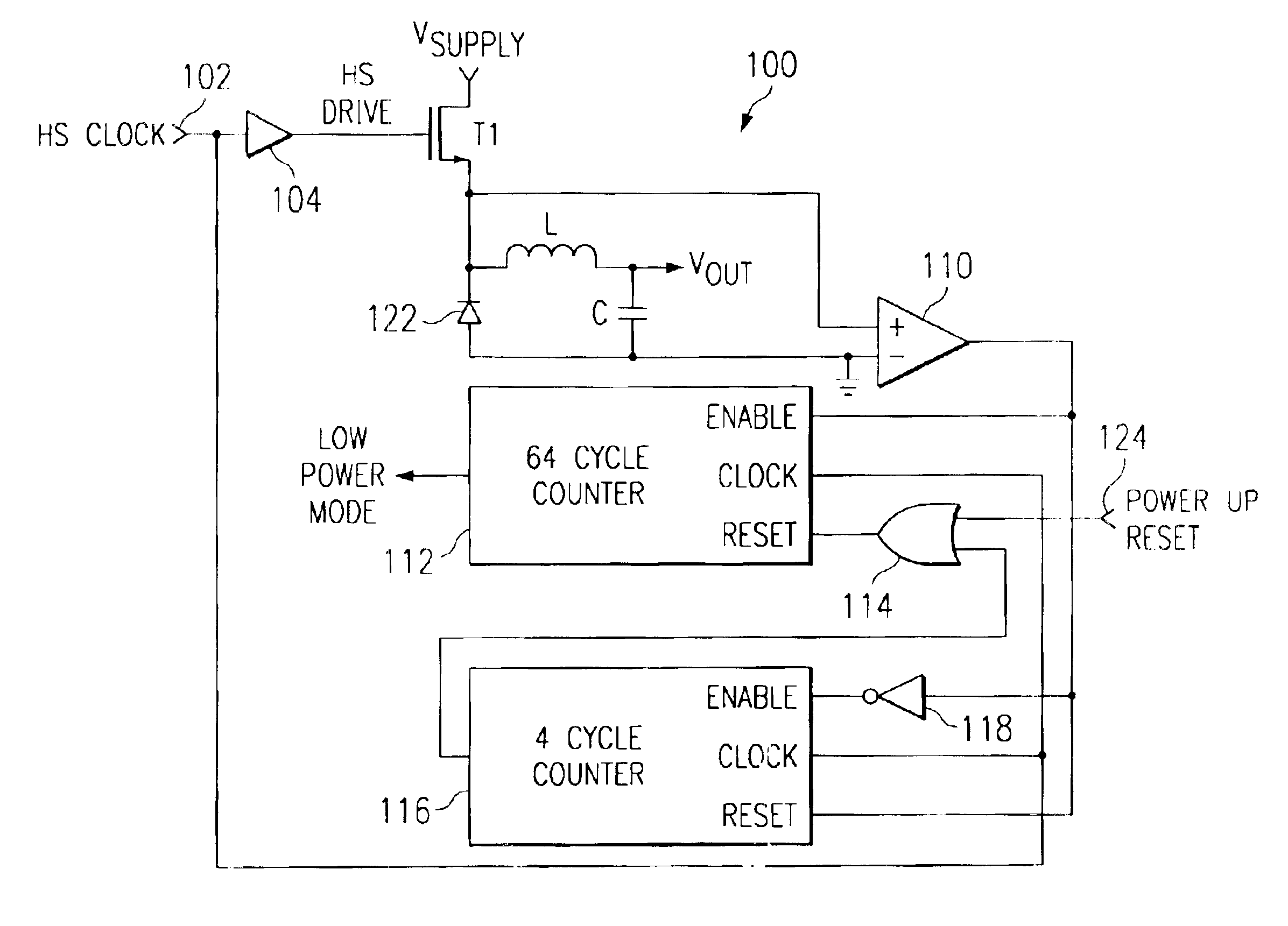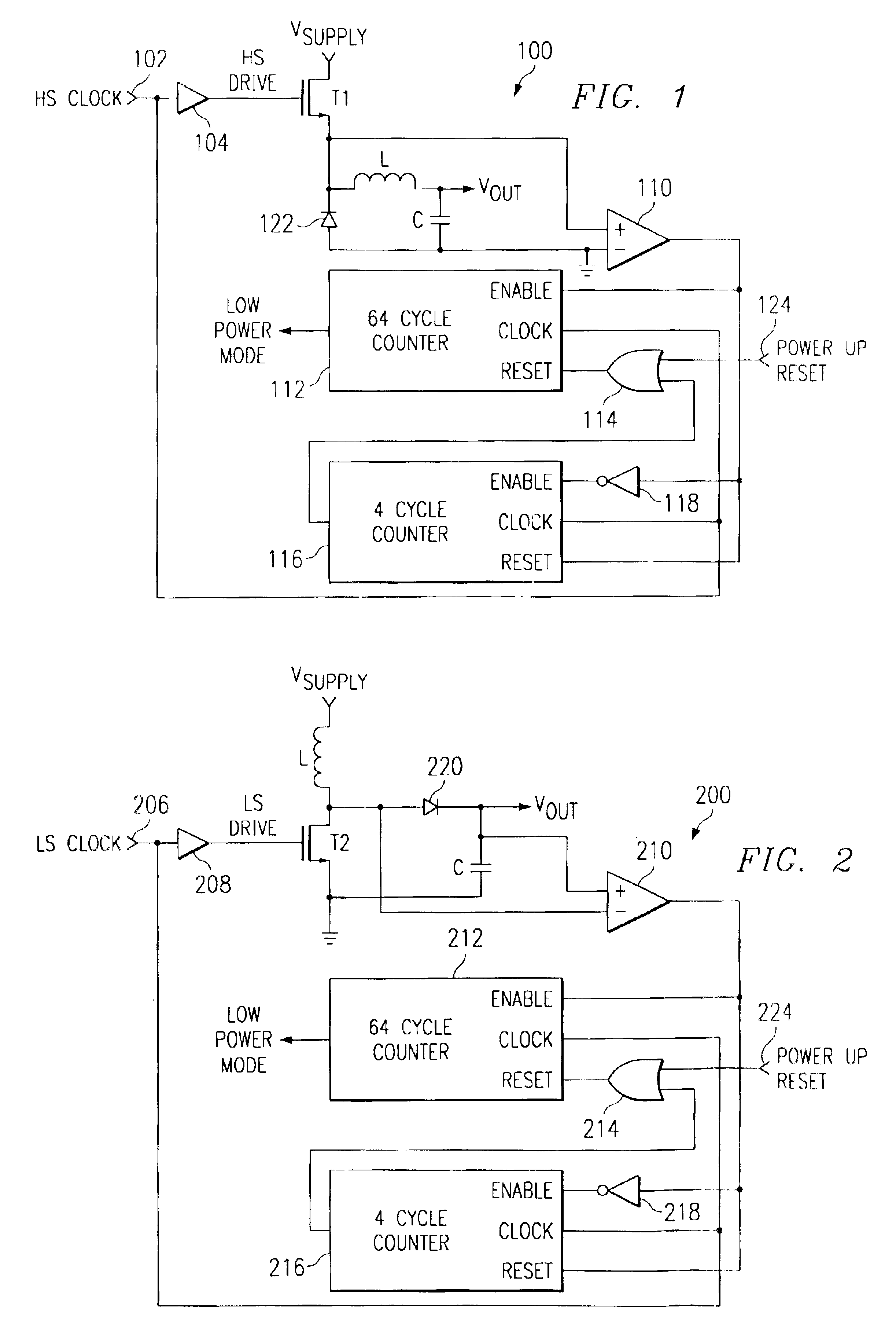Low power mode detection circuit for a DC/DC converter
a detection circuit and low-power mode technology, applied in the direction of electric variable regulation, process and machine control, instruments, etc., can solve the problems of inductors that must be specially manufactured, the amount of power needed to operate the converter is greatly over that consumed by the load, and it is generally pointless to operate the dc/dc converter
- Summary
- Abstract
- Description
- Claims
- Application Information
AI Technical Summary
Benefits of technology
Problems solved by technology
Method used
Image
Examples
Embodiment Construction
Referring to FIG. 1, a schematic block diagram of a buck DC / DC is generally shown as 100. The switching regulator 100 utilizes a conventional configuration including a first switching transistor T1 coupled between a power Vsupply and a reverse biased diode 122 to ground. An inductor L has a first terminal coupled to the node between the switching transistor T1 and the diode 122 and having a second terminal which is the output voltage of the switching regulator. A capacitor C is coupled between the second terminal of the inductor L and ground. The switching transistor T1 is driven by a clock signal labeled HS clock at terminal 102 and a driver 104. The output of the driver 104 is labeled as the signal HS drive. Not illustrated in the drawing for simplicity in illustration and to enhance the understanding of the present invention, is a feedback circuit from the output of the regulator to control the switching of transistor T1 in order to regulate the output voltage. These feedback con...
PUM
 Login to View More
Login to View More Abstract
Description
Claims
Application Information
 Login to View More
Login to View More - R&D
- Intellectual Property
- Life Sciences
- Materials
- Tech Scout
- Unparalleled Data Quality
- Higher Quality Content
- 60% Fewer Hallucinations
Browse by: Latest US Patents, China's latest patents, Technical Efficacy Thesaurus, Application Domain, Technology Topic, Popular Technical Reports.
© 2025 PatSnap. All rights reserved.Legal|Privacy policy|Modern Slavery Act Transparency Statement|Sitemap|About US| Contact US: help@patsnap.com



